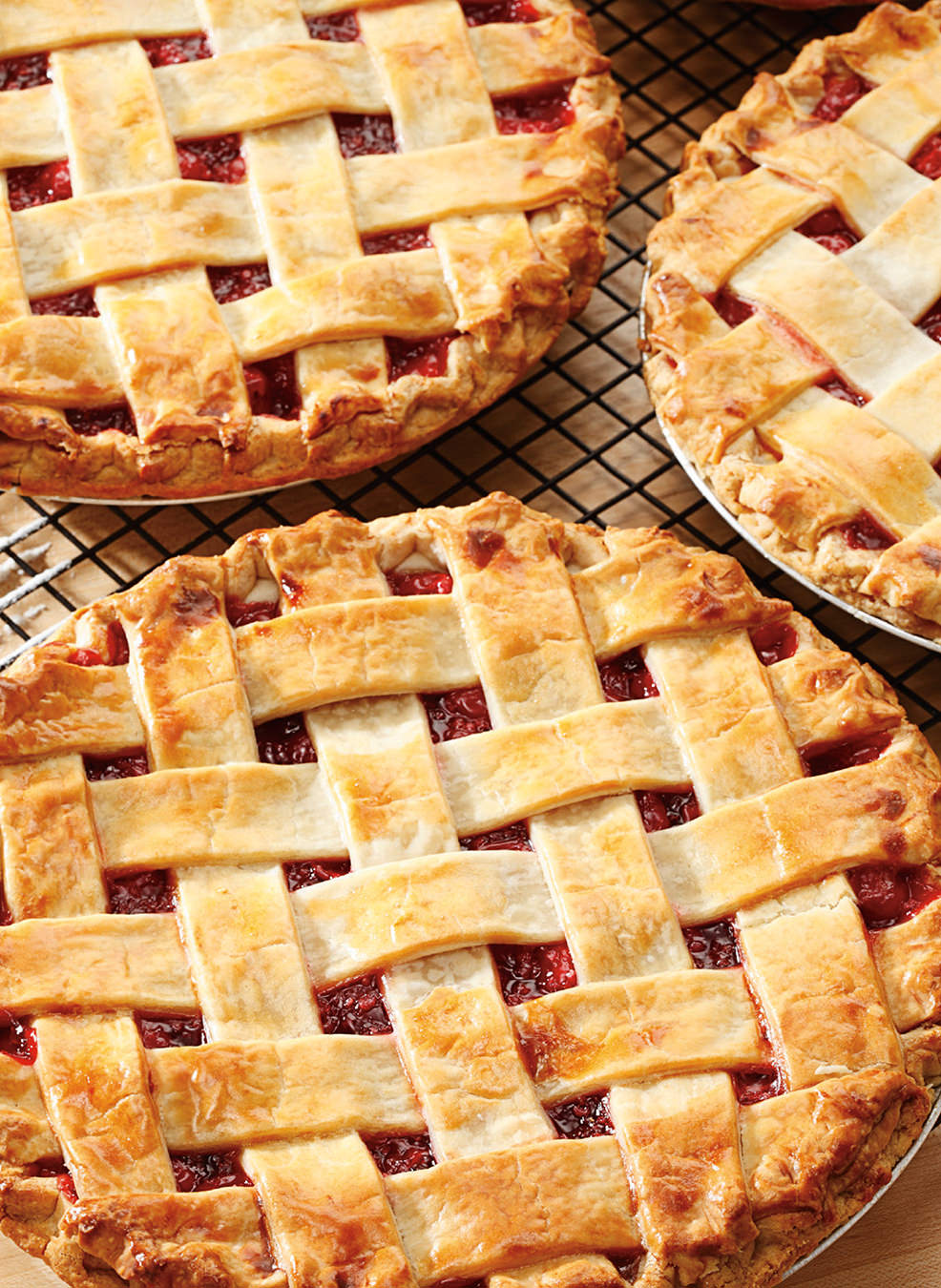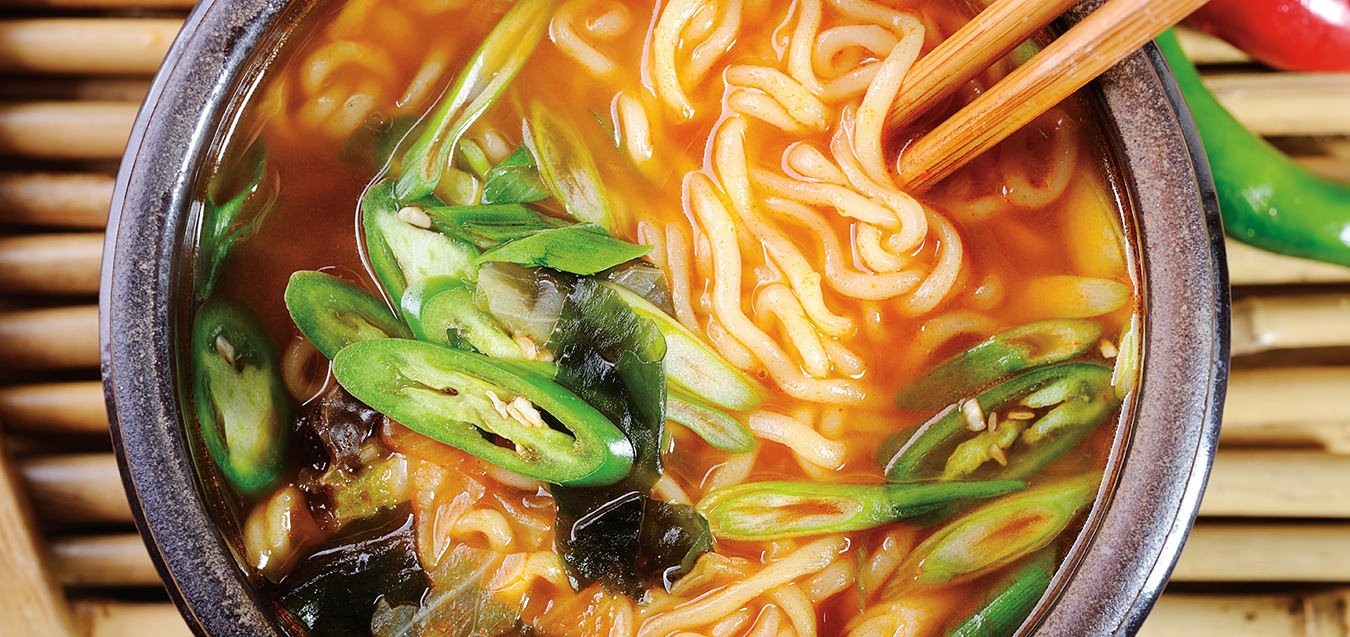Upper Crust
Keep your fork—there’s pie.

Photo ©iStockPhoto/DNY59.
The delicate art of making pie is transcendent to some, infinitely frustrating to others. I remember my initial childhood forays into pie baking like they were only yesterday. Climbing up on a stool to reach the kitchen countertop, I could barely contain my excitement at the prospect of helping Mom in the kitchen. Dropping the cold chunks of butter one by one into a giant bowl of flour. Tentatively pressing the dough into a pie pan. Cutting my finger as I learned that peeling Granny Smith apples is a tricky endeavour for little-girl hands. The sweet, heady fragrance of cinnamon and nutmeg was tantalizing, enticing me back into the kitchen every five minutes to peer through the oven door to check if the pie was done.
Pie is the quintessential comfort food, imbued with memory and nostalgia. Almost everyone has a pie story to tell, whether it’s how Grandma’s house smelled as she set about her baking on a summer afternoon or the jokes that flew around the dinner table as dessert was dished out after a Thanksgiving feast. And everyone’s expectations of pie, be they good or bad, are coloured by the pies of their youth.
The nostalgia surrounding pie can be traced back to its roots in North American history; pie was a staple in the diet of early pioneers. “It was dessert and, traditionally, breakfast the next morning too,” says Peggy Hoffman, who runs Vancouver’s Acme Cafe with her husband, Alan. Colonial settlers brought recipes from their homeland, adapting them to include new-found indigenous berries and fruits. Pies were the ideal calorie-laden food to fuel the rigorous physical demands of farm life. They were baked in shallow round tins to stretch out the ingredient supply—quite literally cutting corners. And long before the advent of iceboxes and refrigerators, the Pennsylvania Dutch introduced pie safes to North America in the 19th century. These wooden cabinets allowed air to circulate through screened or perforated-tin doors, thus preventing spoilage of baked goods and other kitchen staples.
Before opening the Bakehouse in North Vancouver’s Edgemont Village, Marion and Mike McMaster recognized the historical resonance of pie and combed through second-hand bookshops to research recipes. “A lot of the recipes we use here are from my Scottish background,” Marion says. “We looked at really old recipes because we wanted to see how our mothers’ and grandmothers’ cookbooks did it without all the preservatives and the fillers to hide behind.”
Marion’s early memories of pie recall time spent with her aunt Kate in the Highlands of Scotland. “The most fun day was Wednesday—baking day,” she says. Together, she and her aunt would pick fruit from the garden for pie. “Raspberries, redcurrants, blackcurrants … but the best part was climbing the apple tree and throwing the apples down into Kate’s open apron. Those cooking apples tasted tart when eaten raw, but baked with sugar, cinnamon, and nutmeg in a flaky crust, it was an afternoon delight with fresh cream and tea.”
Peggy Hoffman’s decision to feature pie as the centrepiece of Acme Cafe’s dessert menu was also rooted in reminiscence. “It comes from a childhood thing for me. I grew up in the Okanagan and we had fruit coming to us six different ways every summer, from our own trees and from neighbours,” she reflects. “My mom would make dozens of pies and put them in the freezer so we’d have cherry pie all winter. It wasn’t until I was in my twenties that I realized you could make just one pie at a time.”
Though she acquired her own pie-making skills at a tender age, Hoffman notes that not everyone has the same confidence in the kitchen. “I’m shocked how frightened a lot of people are of it. The beauty of pie is its simplicity. Once you master a few key techniques, it actually comes together fairly easily.”
Her tips for the home baker? “Pâte brisée with all butter is delicious but much easier to mess up. Pick a recipe that’s 60:40 shortening and butter. Shortening is much more forgiving to work with.” Most importantly, keep things cold and work with the dough as quickly as possible. “Put a little muscle into it and roll it out in about 30 seconds or so. Warm pastry is not your friend,” she cautions. Hoffman explains that heating and evaporation of fat is what produces a light, flaky pie crust. When that fat is warm, it doesn’t evaporate quickly enough to create the necessary air pockets. “If your dough feels a little soft and you’re in doubt, take the extra few minutes to put it back into the fridge or freezer. Once you understand the food science behind what makes good pie, you’re more likely to stop overworking your dough.”
Summertime sees the McMasters hand-picking all the blackberries themselves for one of their most popular seasonal pies. During the autumn, the Bakehouse’s pumpkin and apple pies with cranberries and orange brandy grace many dessert tables; come wintertime, the focus turns to mincemeat.
Fruit pies are the cornerstones of Acme Cafe’s pie selection—the lush, almost caramelized taste of their peach pie is swoonworthy—but Hoffman notes that cream pies have rapidly become a staple. Don’t miss the chance to try Acme’s Double Rainbow pie when it’s available: chocolate–peanut butter ganache topped with bananas, vanilla custard, and whipped cream. Definitely worth keeping your fork.
Editor’s note: Acme Cafe is now permanently closed.
Editor’s note: The Bakehouse Edgemont Village is now located in Dundarave village.




